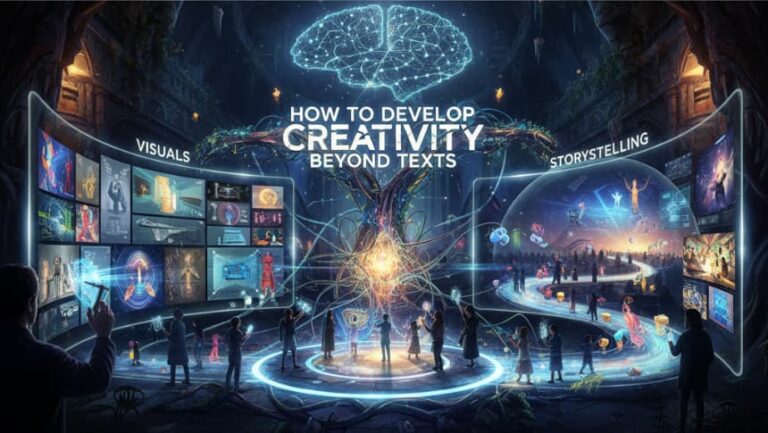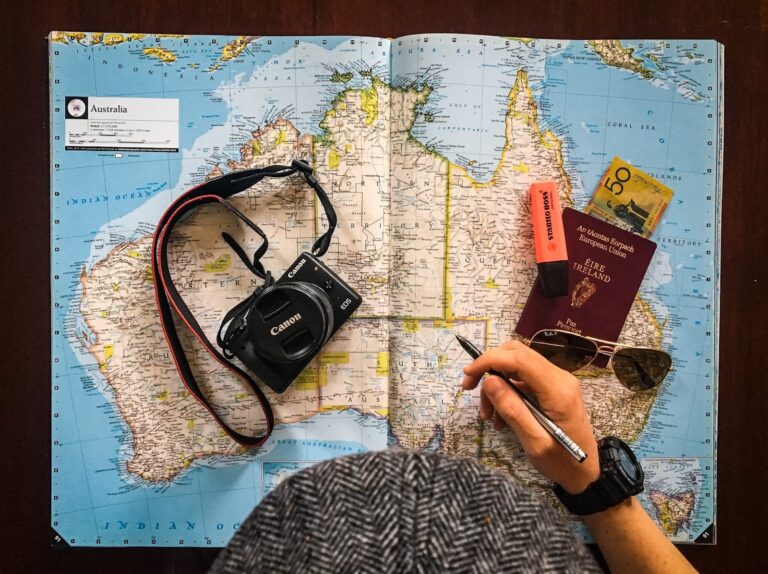When people think of creativity, they often envision writing, such as poetry, novels, or blogs. But creativity goes far beyond the written word. In the digital age, audiences are drawn to rich experiences that combine text with visuals, interactivity, and storytelling. Whether you’re a marketer, content creator, or educator, learning how to expand creativity beyond text can transform the way people engage with your work.
This guide explores how to embrace new creative dimensions and why developing skills in visuals, interactivity, and storytelling is essential in a world overloaded with content.
Why Go Beyond Text?
Text alone can be powerful, but it’s not always enough. Online audiences are bombarded with written content every day: articles, captions, ads, and emails. To stand out, creators need to design immersive experiences that capture attention instantly.
Expanding creativity beyond text offers several advantages:
- Better engagement – Visuals and interactive elements keep readers hooked.
- Improved clarity – Complex ideas are easier to explain with images, charts, or animations.
- Stronger emotions – Stories combined with multimedia connect with people on a deeper level.
- Wider reach – Visual and interactive content appeals across cultures and languages.
Visuals: The Language Everyone Understands
Visual communication is universal. A well-designed image or video can communicate ideas faster and more memorably than a page of text.
1. Use Images Strategically
Don’t just add stock photos for decoration. Instead:
- Create custom illustrations that match your brand style.
- Use infographics to simplify complex data.
- Incorporate screenshots or diagrams to support tutorials.
2. Explore Video Content
Video combines text, sound, and visuals into a single storytelling format. Short-form videos (like reels or TikToks) are especially effective for capturing quick attention, while long-form tutorials build authority.
3. Experiment With Design Tools
You don’t need to be a professional designer. Tools like Canva, Figma, and Adobe Express make it easy to create graphics, animations, and layouts that bring your text to life.
Interactivity: Engaging the Audience
Static text is one-way communication. Interactivity transforms your content into a two-way experience, encouraging participation and deeper engagement.
1. Quizzes and Polls
Interactive quizzes or polls help readers test their knowledge, express opinions, or personalize their learning experience.
2. Clickable Visuals and Infographics
Instead of showing a static infographic, make it clickable. Let readers explore data points, hover for explanations, or zoom in for details.
3. Gamification
Adding elements of play, like progress trackers, badges, or interactive challenges, can make your content more memorable. That’s one reason why people love mobile games without ads: they offer immersive, uninterrupted experiences that keep players engaged. Similarly, ad-free interactive content allows audiences to stay focused and connected.
4. Interactive Storytelling
Branching storylines or choose-your-own-adventure formats let readers control the narrative. This can work in blog posts, e-learning, or brand campaigns.
Storytelling: The Heart of Creativity
Storytelling is one of the oldest and most effective ways to engage people. Beyond texts, storytelling combines narrative with visuals and interactivity to create powerful experiences.
1. Define Your Core Message
Every story starts with a purpose. What do you want people to feel, learn, or do after engaging with your content?
2. Build Emotional Connections
Facts inform, but emotions persuade. Use relatable characters, real-world scenarios, or challenges that mirror your audience’s struggles.
3. Show, Don’t Just Tell
Instead of writing “our product helps teams collaborate,” show it through a story: a busy team achieving success after overcoming obstacles with your product.
4. Blend Mediums
Modern storytelling doesn’t live in one format. Combine text with video, audio, animation, and interactive elements to create a multi-layered narrative.
Practical Tips to Expand Creativity
- Learn basic design skills – Even simple design knowledge makes your content more professional.
- Collaborate with other creatives – Work with illustrators, videographers, or developers to enhance your projects.
- Experiment regularly – Try new formats without fear of failure. Each experiment teaches you something.
- Observe trends – See how top creators use visuals, interactivity, and storytelling, then adapt ideas to your style.
- Seek feedback – Show drafts to peers or your audience and refine based on their reactions.
Tools and Platforms to Explore
- For visuals: Canva, Photoshop, Figma, Blender (for 3D).
- For interactivity: Typeform (quizzes), Genially (interactive visuals), Notion (dynamic docs).
- For storytelling: Adobe Premiere Pro (video), Descript (audio & video editing), Shorthand (interactive stories).
The right tools don’t replace creativity, but they give you the means to bring creative ideas to life.
Challenges and How to Overcome Them
- Time investment – Creating multimedia takes longer than writing text. Solution: repurpose content into multiple formats.
- Skill gaps – You may not know design, coding, or animation. Solution: use beginner-friendly tools or collaborate.
- Distractions and burnout – Creative work requires focus. Solution: build structured routines and minimize interruptions.
The Future of Creative Content
As technology evolves, creativity will increasingly rely on multisensory experiences. Augmented reality (AR), virtual reality (VR), and AI-powered personalization will push the boundaries of storytelling. Content won’t just be read or watched, it will be lived.
Those who learn to combine text, visuals, interactivity, and storytelling today will be well-prepared to thrive in this creative future.
Final Thoughts
Creativity goes far beyond words on a page. By incorporating visuals, adding interactivity, and mastering storytelling, you can create content that resonates deeply with audiences and sets you apart in a crowded digital world.
Experiment boldly, embrace new tools, and keep your audience at the heart of everything you create. Whether through a striking infographic, an interactive quiz, or a powerful story told across multiple formats, creativity beyond text is your path to lasting impact.





